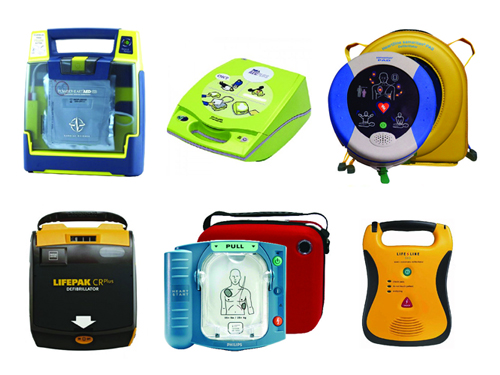Introduction to AED’s
DEFINITION
AED (Automatic External Defibrillator) is a small, portable device that uses sophisticated electronics to diagnose and analyze a victim’s cardiac arrhythmias of ventricular fibrillation and ventricular tachycardia (i.e. irregular heartbeat), and is able to determine whether defibrillation is required. If necessary the AED can administer defibrillation (electric shock) to the heart, allowing the heart to re-establish a normal rhythm.
Originally intended for use by non-medical personnel such as officers of the peace, fire fighters, flight attendants, and other lay-rescuers with proper training, AED’s are becoming increasingly more available in public places such as schools, airports, banks, concert halls, malls, fairgrounds, libraries, health clubs, office building, and even restaurants and cafes. With this wider access to AED’s, the devices’ design has been simplified to incorporate easily-understood audio and visual commands. And with their growing availability and accessibility, public AED’s are typically installed in large common areas and made immediately visible by an accompanying bright sign.
Research has shown AED’s to be approximately 95% accurate – that is the nearly unerring ability to properly assess the need for defibrillation – and most employ multiple safeguards to protect both the victim and the rescuer. Experts agree that the concept of Public Access Defibrillation (also known by the acronym “PAD”) may be the biggest advance in the treatment of sudden cardiac arrest (SCA) since the invention of CPR in 1960.
EFFECTIVENESS
For each minute that AED is delayed the victim’s chance of survival is reduced by approximately 10% percent. Conversely, early defibrillation increases survival rates to greater than 50%. A study conducted over a 2-year period analyzing the effects of early defibrillation found that of 22 victims of cardiac arrhythmia, 18 were not only treatable by AED, but 11 of these 18, survived. Notably, 6 of the 11 surviving victims were treated with AED by bystanders with no training in AED use.
LIABILITY
The prevalence of AED’s and ease of use dictate that in most states in the United States any layperson who administers defibrillation in “good faith” is protected under Good Samaritan laws. This means that the individual using AED while not acting in a “professional” capacity cannot be held civilly liable for the harm or death of a victim by providing improper care, provided that the person was acting within the limits of his training and in good faith.